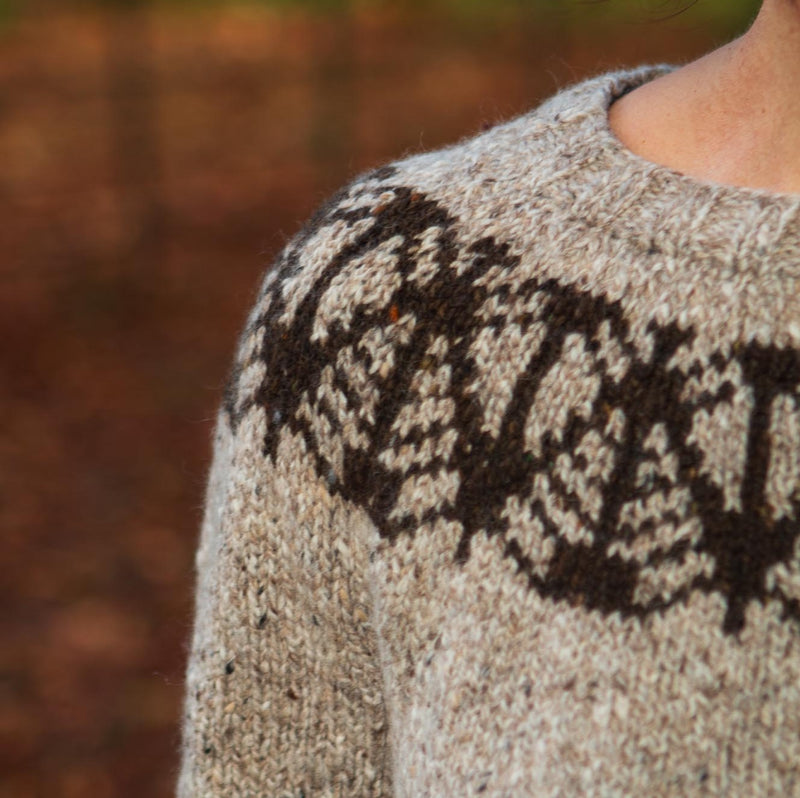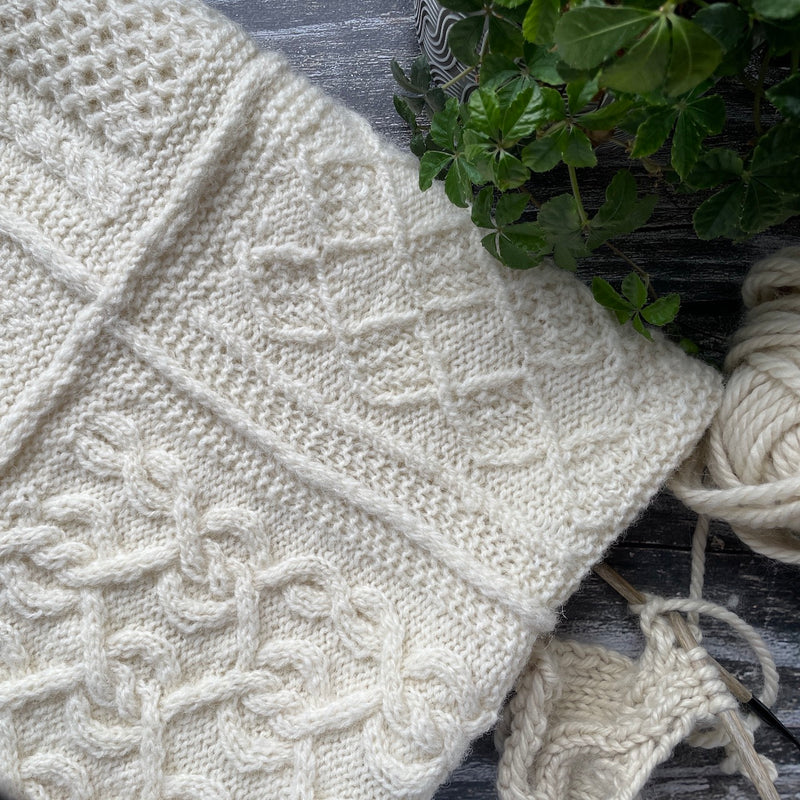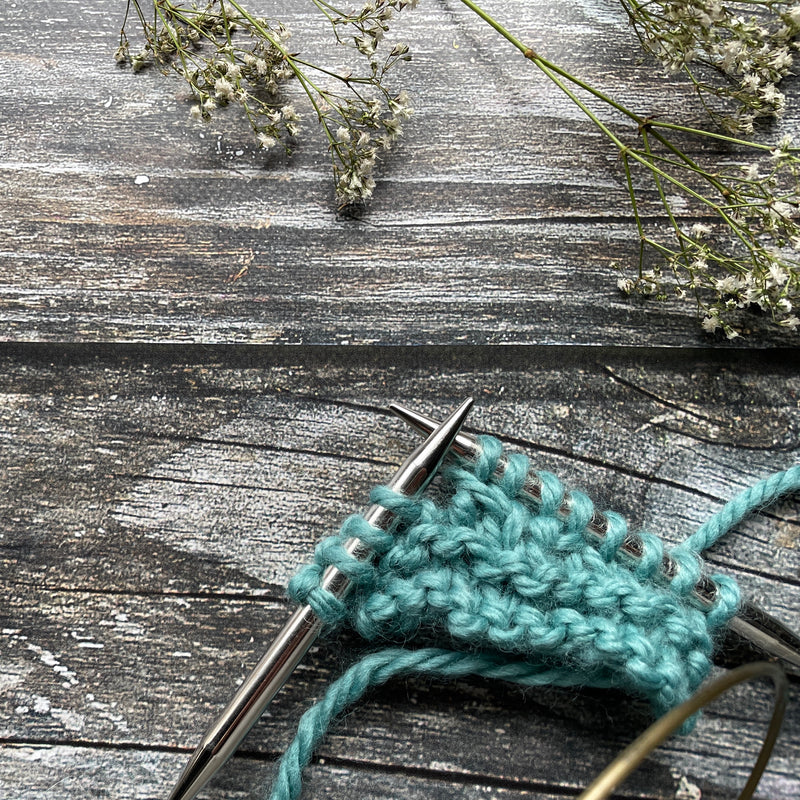If you need a very stretchy ribbed cast-on then the Italian Cast-On is what you're looking for! This versatile method is easy to learn, and it's perfect for a wide range of knitting projects.
This is the ideal cast-on for Brioche as it perfectly mimics the brioche rib. You can even do a two colour version by using different colour strands for each side of the yarn.
What is the Italian Cast On?
The Italian cast on is a knitting technique that creates a stretchy and seamless edge. It's similar to the long-tail cast on, but with a few key differences. Instead of making a slipknot to start, you'll make a twisted loop that will become the first stitch of your project.
How to Do the Italian Cast On
You can press play on this video or scroll on for written instructions below:
To do the Italian cast on, follow these simple steps:
- Create a tail that is approximately 3 times the length of your finished work width.
- Holding your yarn in the left hand with yarn tail in front under your thumb and working yarn at back over your index finger, grasp end of both yarns in your fist to tension. Holding your thumb and index finger in an 'L' shape.
- Insert your needle from the left side into the loop between your fingers and twist anti-clockwise to create the first stitch on the needle, or alternatively begin straight with the next step.
- To create a ‘knit’ stitch bring your needle over your front yarn, bring it up between both strands from underneath, over the back strand and then scoop the back yarn under the front yarn. This puts a 'knit' stitch on the needle.
- To create a ‘purl’ stitch bring your needle behind the back yarn, bringing the needle from under all the way to the front, then scoop the front yarn under the back yarn. This puts a 'purl' stitch on the needle.
Continue to work steps 4 and 5 for your desired number of stitches. When you work the final stitch take care to hold the second strand in front of the final stitch cast on as it is not firmly anchored on your needle until you work the first stitch.
If you wish to work a two colour Italian Cast-On the technique will be the very same but you will use two strands of yarn tied together, for the two colours you want to use. Your 'knit' stitch colour will be the back strand and the 'purl' stitch colour will be the front strand.
Benefits of the Italian Cast On
- Stretchiness: The Italian cast on is known for its stretchiness, making it ideal for projects that need to stretch, like hats, socks, or cuffs.
- Seamless edge: The Italian cast on creates a seamless edge, perfect for projects that require a smooth finish, such as scarves or cowls.
- Easy to work into: The twisted stitches of the Italian cast on create a foundation row that is easy to work into on the first row of your project.
- Stability: The twisted stitches of the Italian cast on are more stable than other cast-on methods, which means they are less likely to unravel.
- Versatility: The Italian cast on is a versatile method that can be used for a wide range of knitting projects, from socks to sweaters.
Read more about knitting cast on methods or browse our tutorials here.
Italian Cast On FAQs
Is the Italian cast on difficult to learn?
The Italian cast on can be a bit tricky to master at first, but with practice, it becomes easier. Start with a small project to get the hang of it before moving on to larger ones.
What types of projects are best suited for the Italian cast on?
The Italian cast on is ideal for projects that require a stretchy or seamless edge, such as hats, socks, scarves, or cowls.
Is the Italian cast on suitable for both knitting in the round and flat knitting?
Yes, the Italian cast on is suitable for both types of knitting.
What type of yarn works best with the Italian cast on?
Any type of yarn can be used with the Italian cast on, but it's recommended to use a slightly larger needle size than what you plan to use for the rest of your project.
Can the Italian cast on be used with different stitch patterns?
Yes, the Italian cast on can be used with a variety of stitch patterns. However, keep in mind that the twisted stitches may affect the appearance of certain patterns.
Is the Italian cast on suitable for beginner knitters?
The Italian cast on can be a bit challenging for beginner knitters, but with practice, it can be mastered. It's a good idea to start with a small project and work your way up to larger ones.
How many stitches should I cast on with the Italian cast on?
The number of stitches you cast on will depend on your project. Be sure to consult your pattern for guidance on the number of stitches needed.





